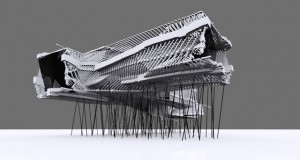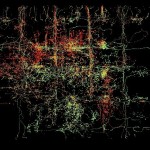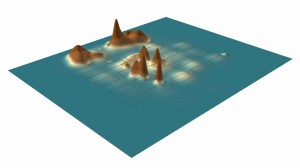Interdisciplinary Voices 1
During our symposium to launch the project we featured the voices of the makers of Synchronous Objects including faculty from several disciplines as well as graduate student and staff researchers. We also invited two special outside guests who are familiar with Forsythe’s work to discuss how they think Synchronous Objects is relevant in their domains and perhaps more broadly. Each of them wrote posts for the e-symposium that you can read in full (see tags or categories to the right). But for this week, I will compile excerpts in shorter posts starting with Mark Goulthorpe. Mark is an architect at MIT who has collaborated with Forsythe in the past. For me, he represents some of the most interesting current trends in architecture including a well-established appreciation for process and performance, interest in surface and event, and a creative approach to the products of the trade. For more ways into these ways of thinking about architecture check out this beautiful blog Interactive Architecture. Many of these projects could be described as choreographic objects.
Mark is a fan of Forsythe’s work and describes dance as relevant to “all areas of cultural production.” He points to Forsythe’s use of “rule-based generative processes” that can be considered “within an historical lineage of similar intellectual projects in different cultural domains (Raymond Roussel/literature, James Joyce/literature, Antoni Gaudi/architecture, Jacques Derrida/philosophy, Paul Steenhuisen/music).” He also suggests that “emergent technologies nurture a new relational aptitude that Forsythe’s work seemingly instantiates.” And he asks us to consider the “expansion of creative praxis from an essentially deterministic and individual mode, that has dominated most established cultural fields for millennia, to one that prioritizes collective creative endeavor.” He finishes by saying “I regard Forsythe as an architect, albeit of the possibility of ballet at the threshold of a new technological paradigm…” This is one of the best things about working on this project with Bill, the way in which other disciplines can recognize themselves in dance/choreography.
For links to more on Mark’s work I like the Floating Points series here. And his more recent project Springy Thingy can be seen here.
—Norah Zuniga Shaw




 NORAH: Ola, let’s start with a discussion of your involvement in the project. I’ve had a long term interest in geography because of my previous work in environmental science but for many people the connection between dance and geography might seem surprising.
NORAH: Ola, let’s start with a discussion of your involvement in the project. I’ve had a long term interest in geography because of my previous work in environmental science but for many people the connection between dance and geography might seem surprising.
Recent Comments